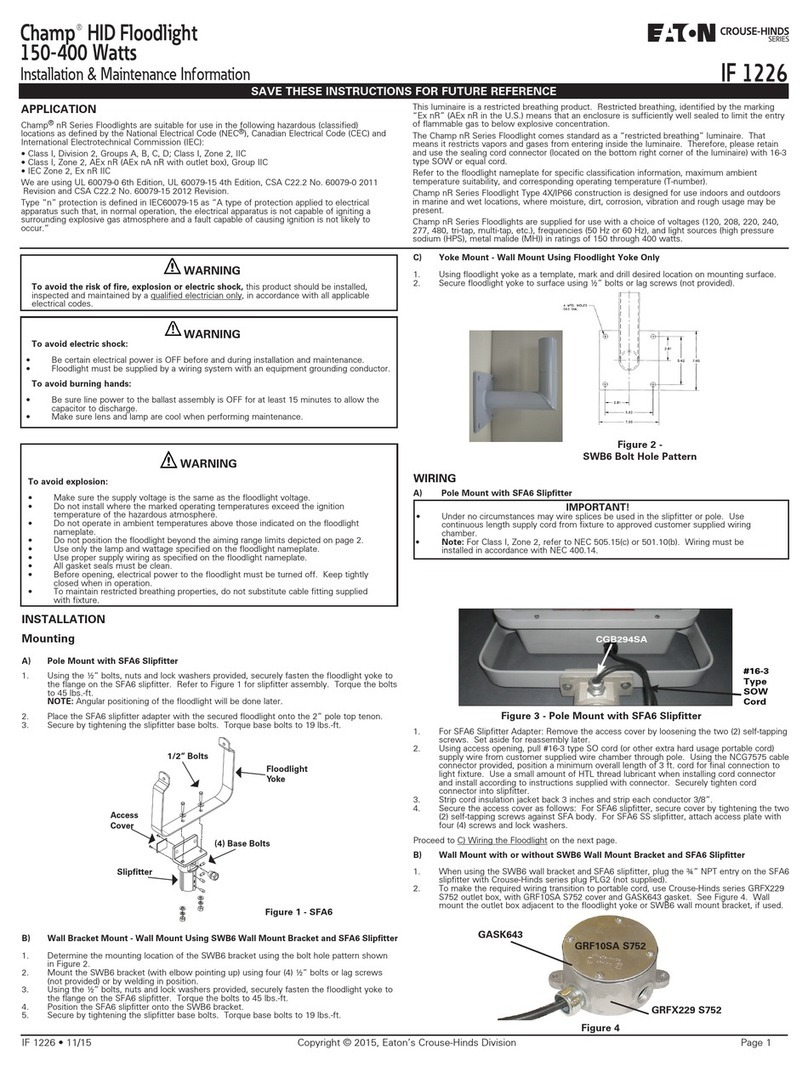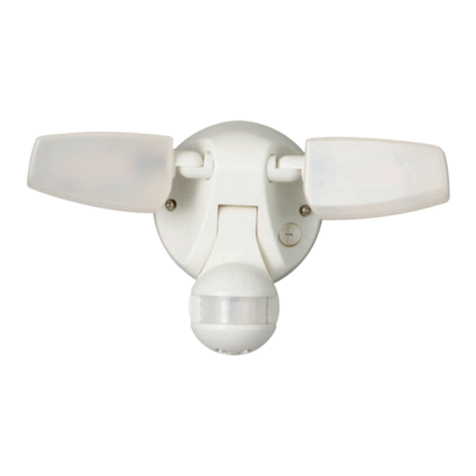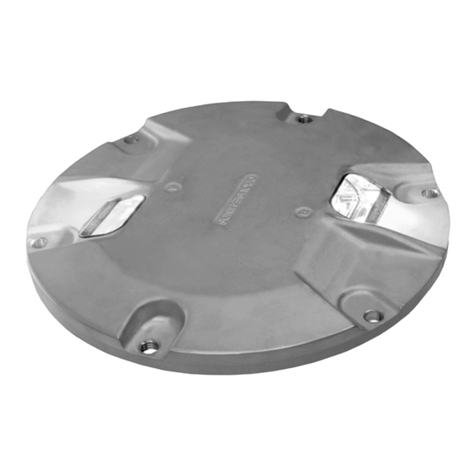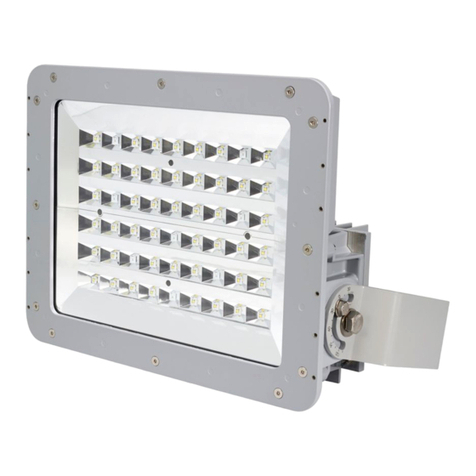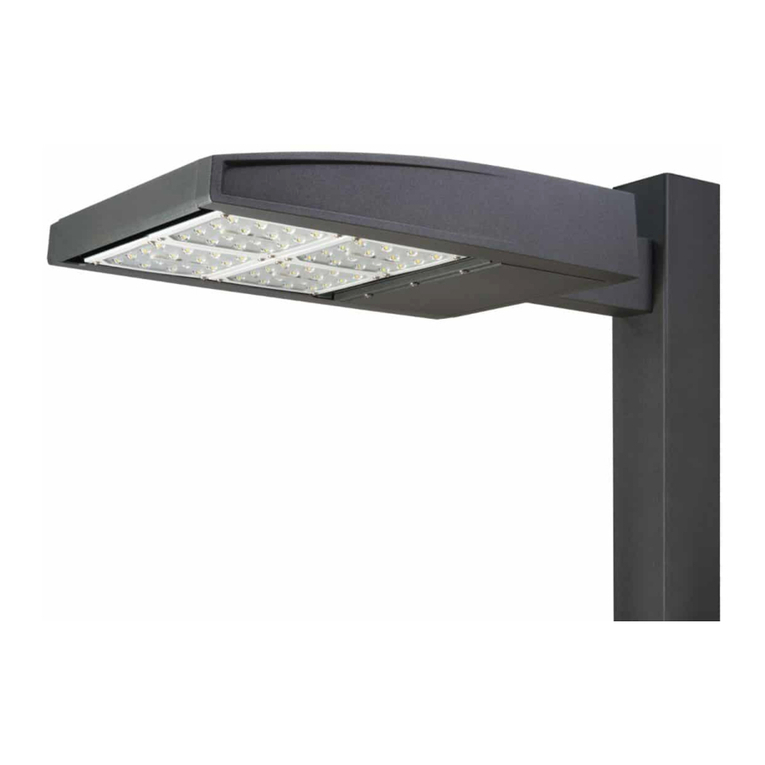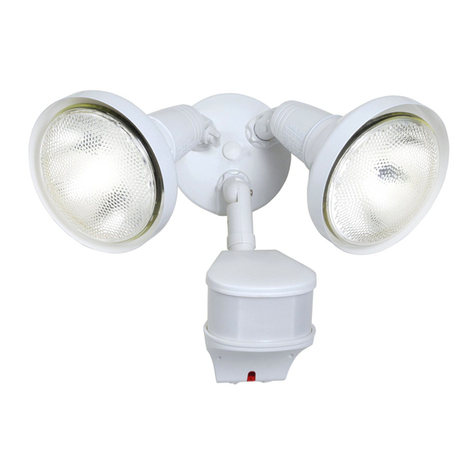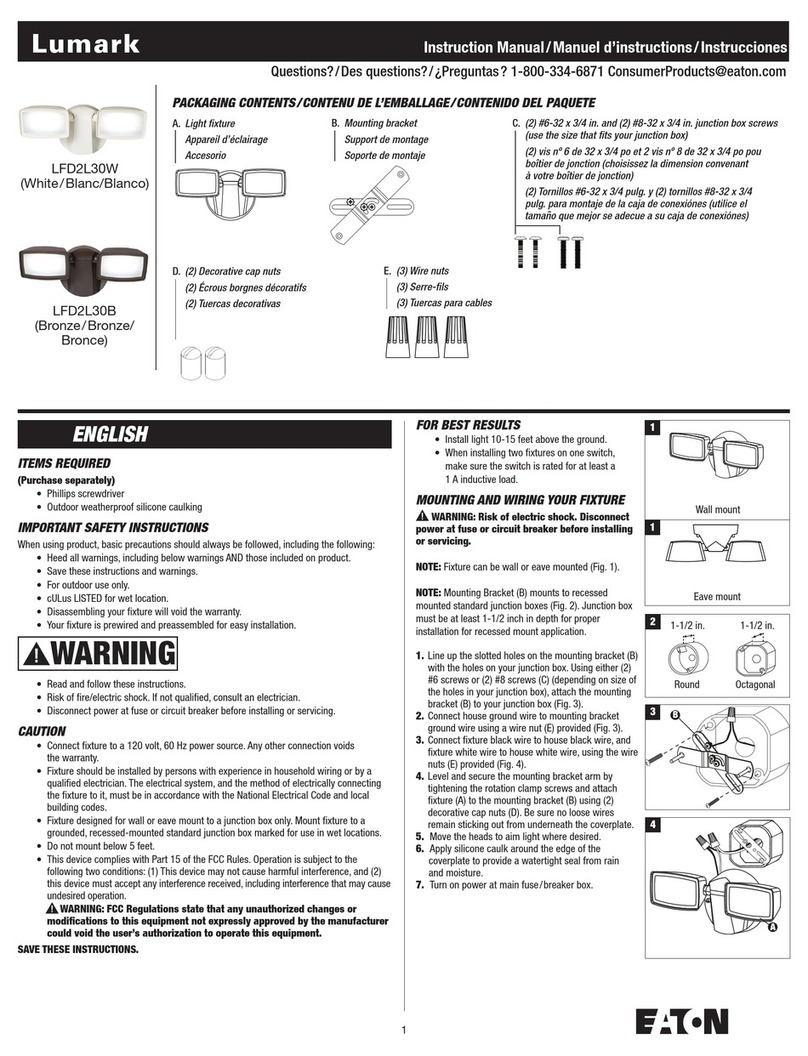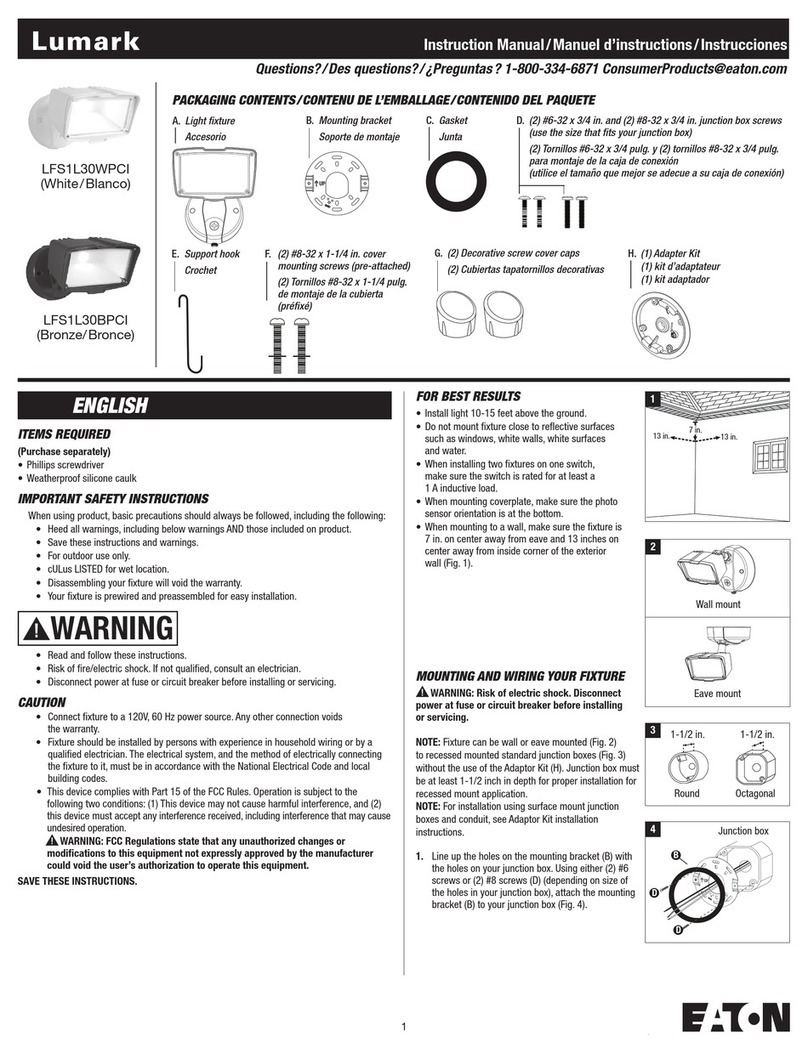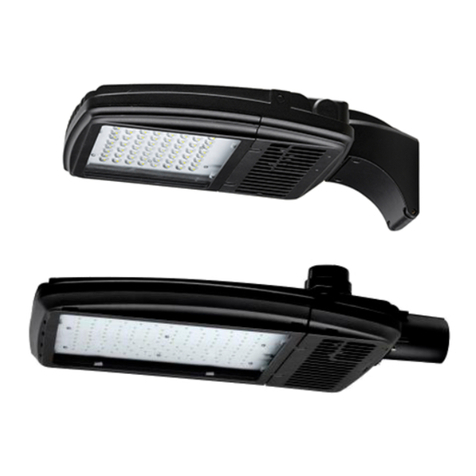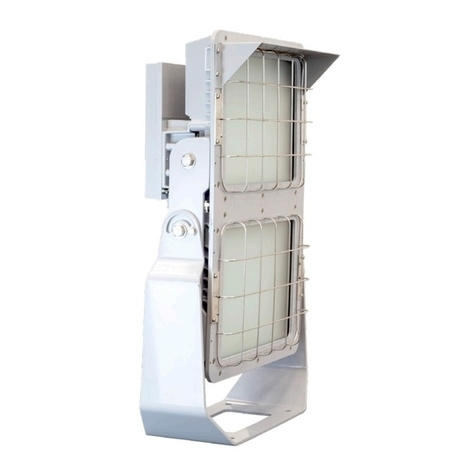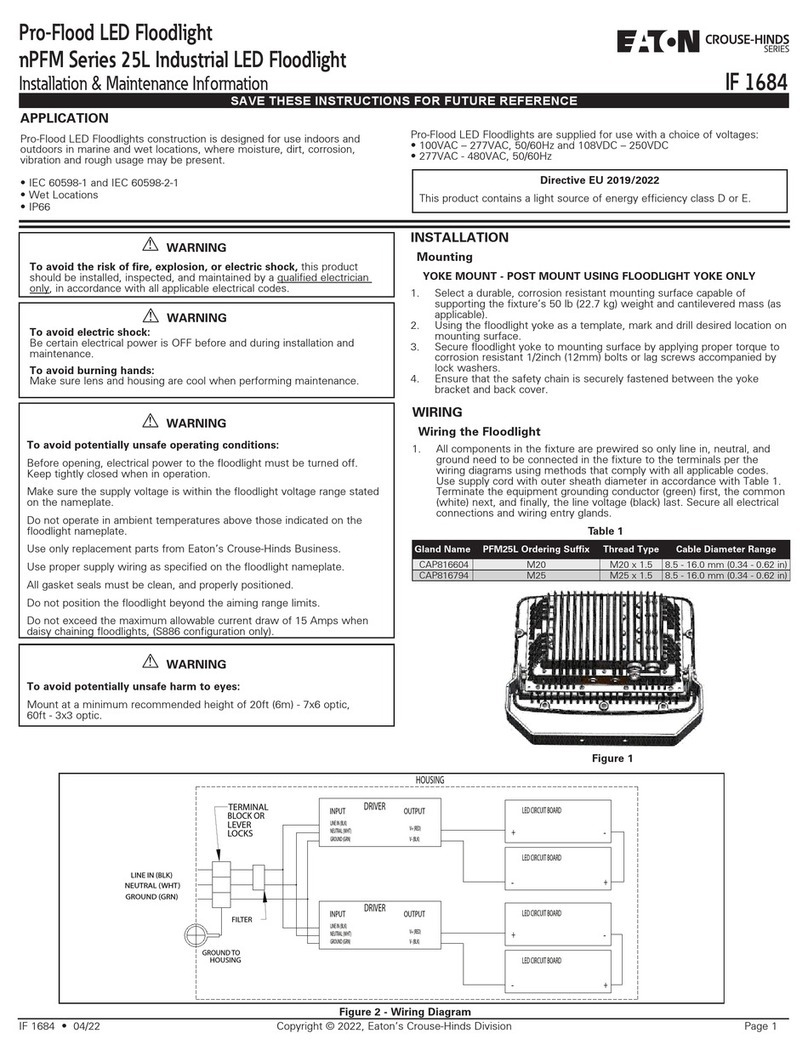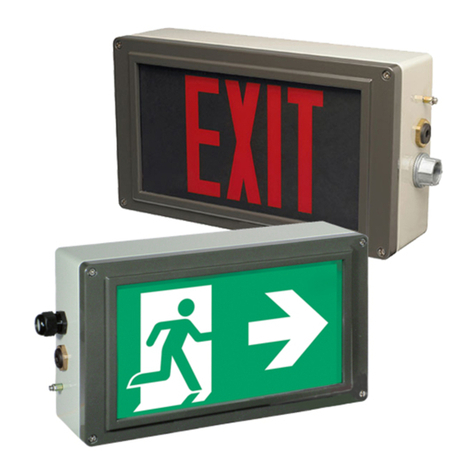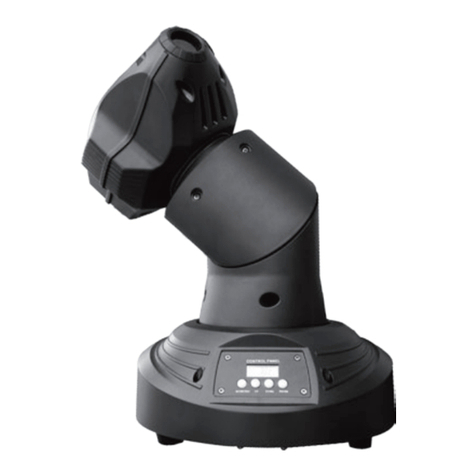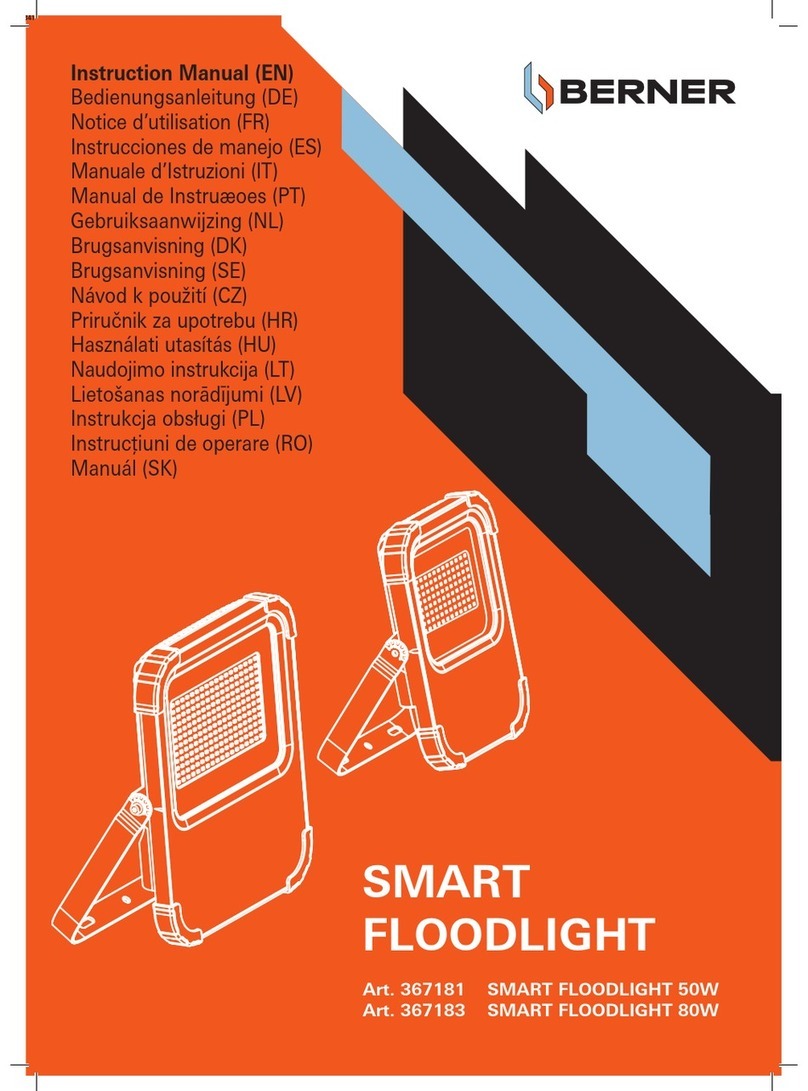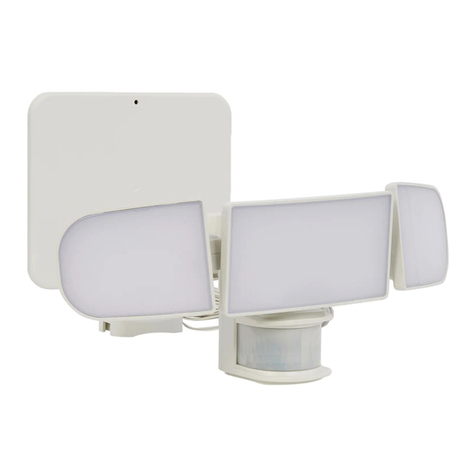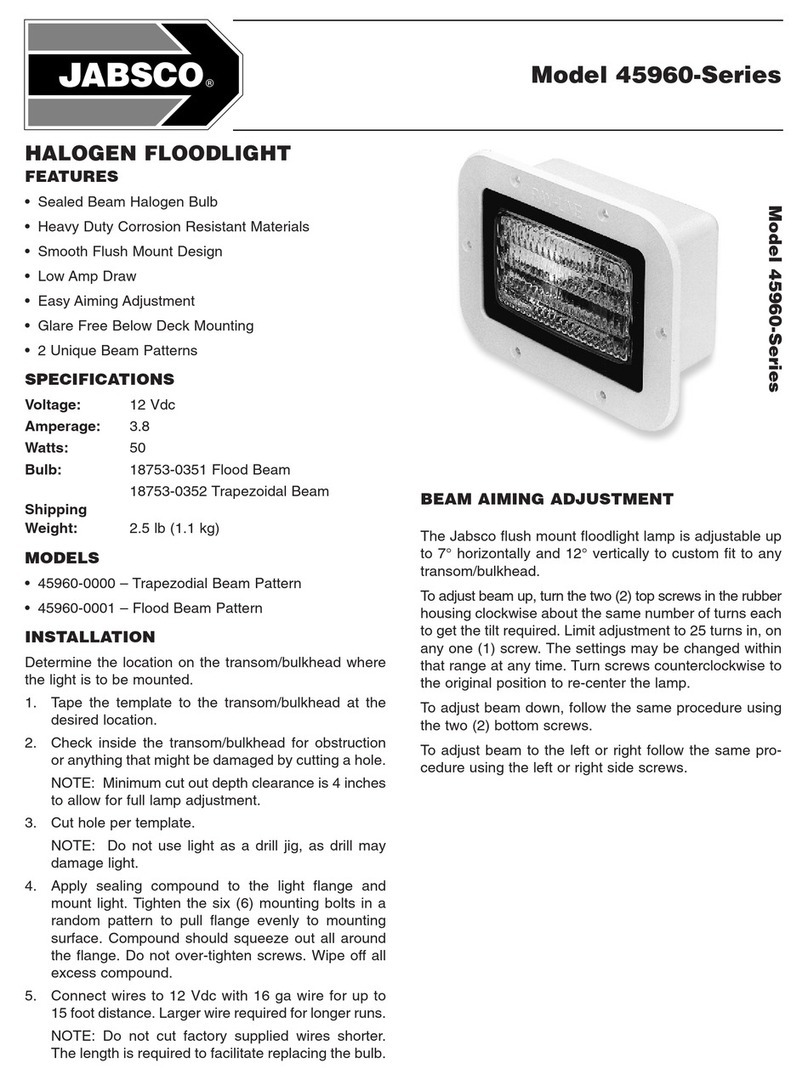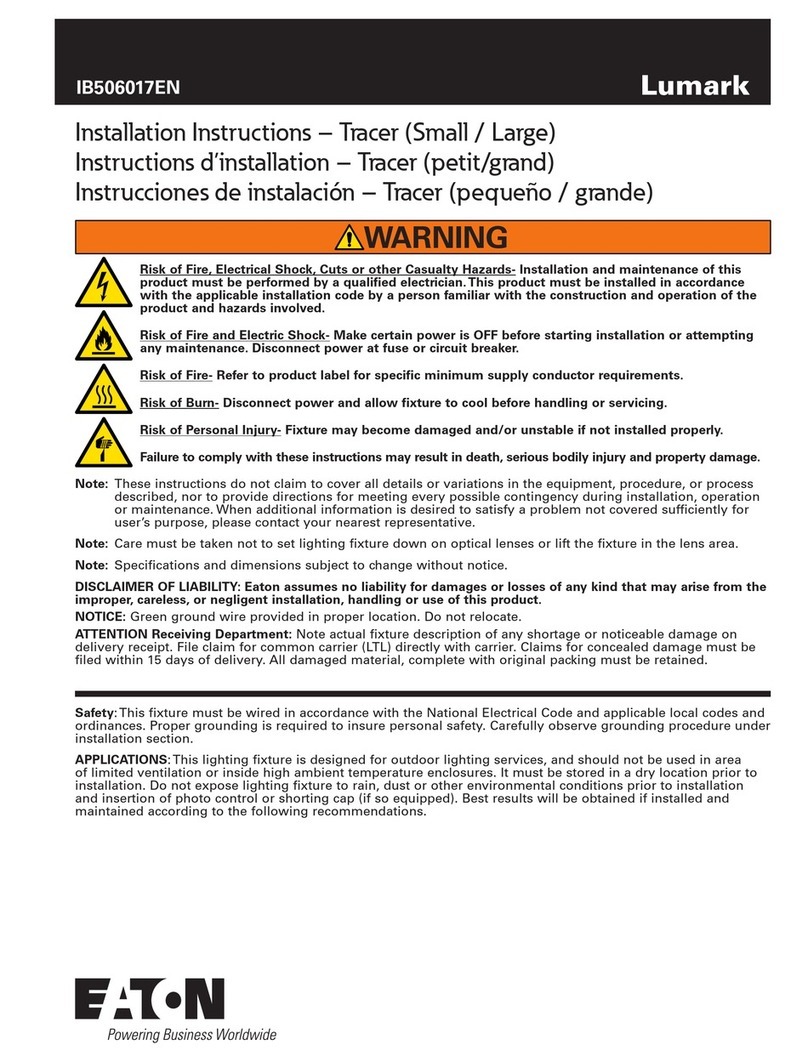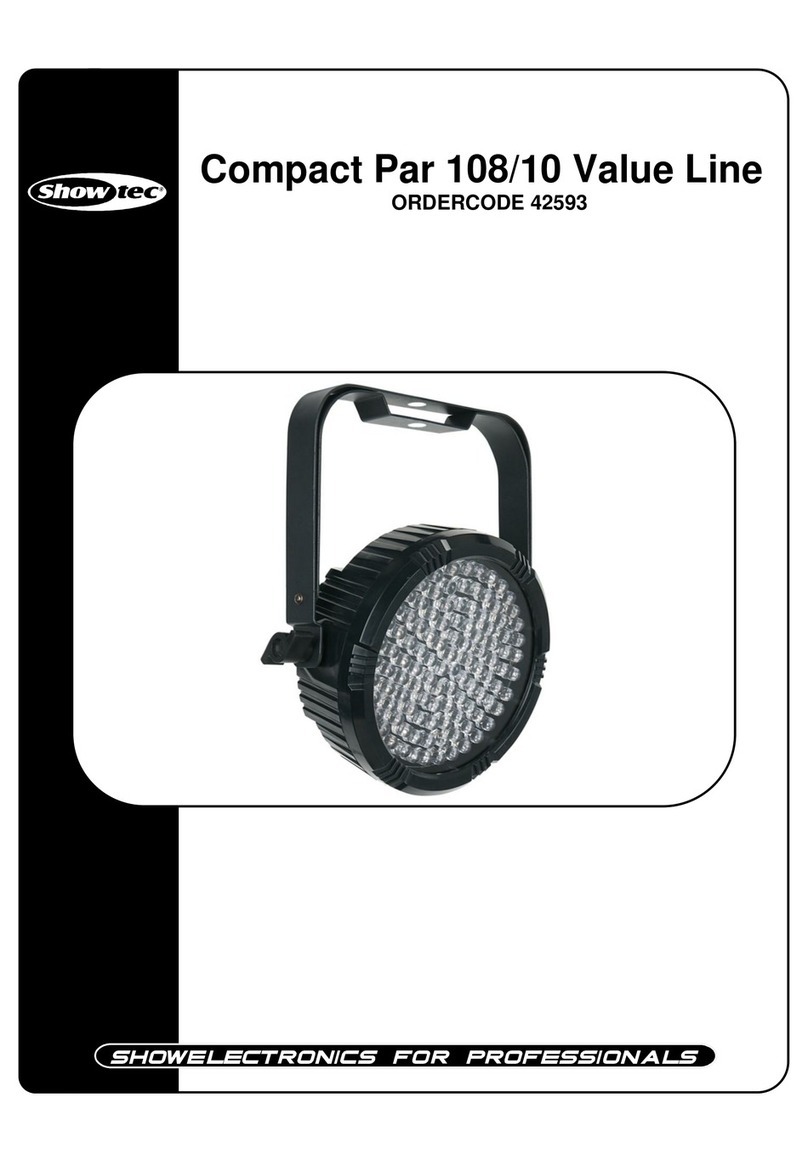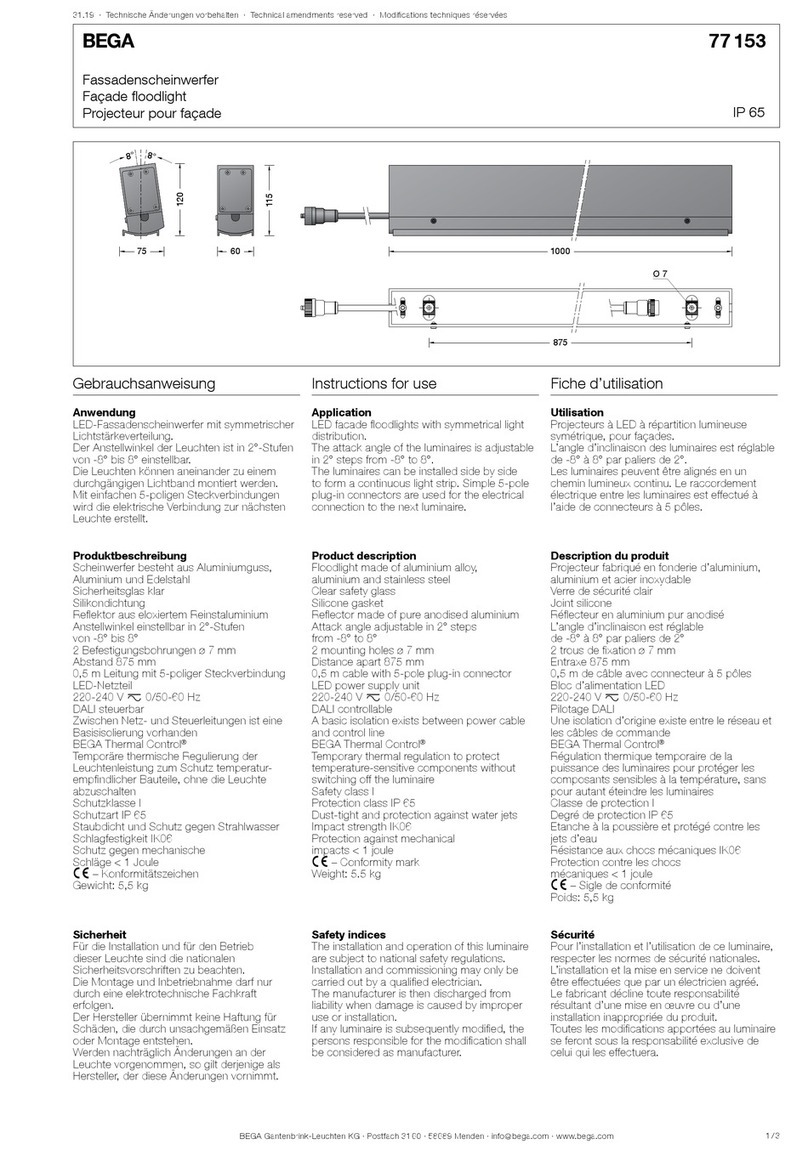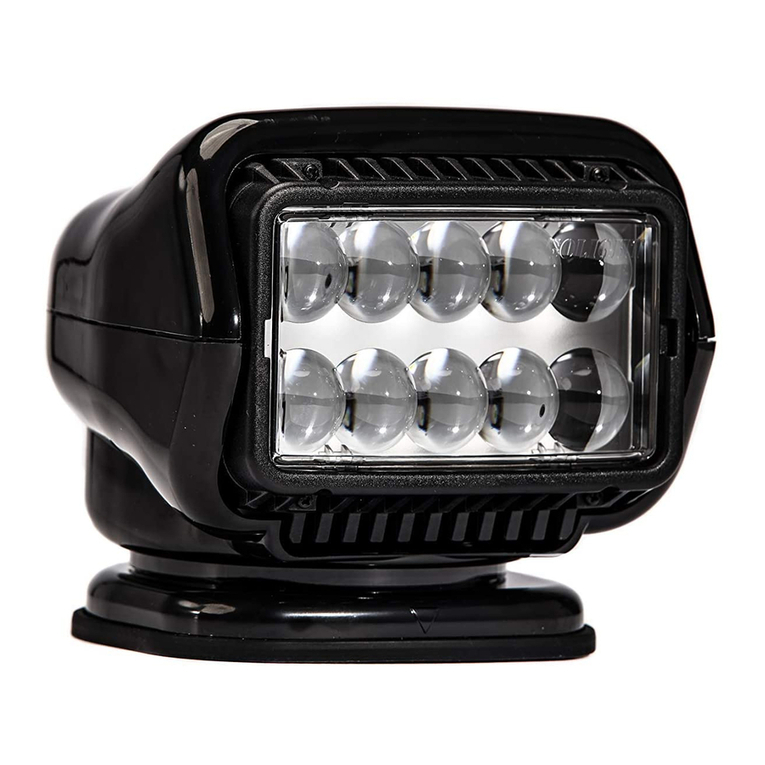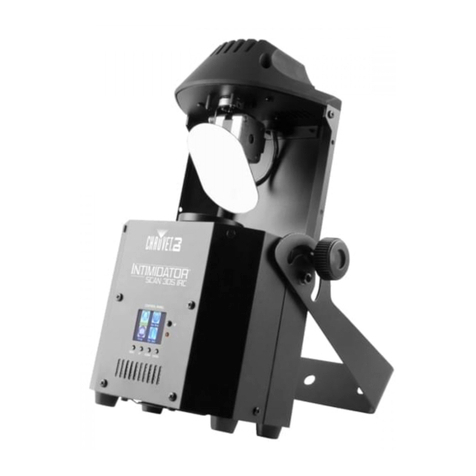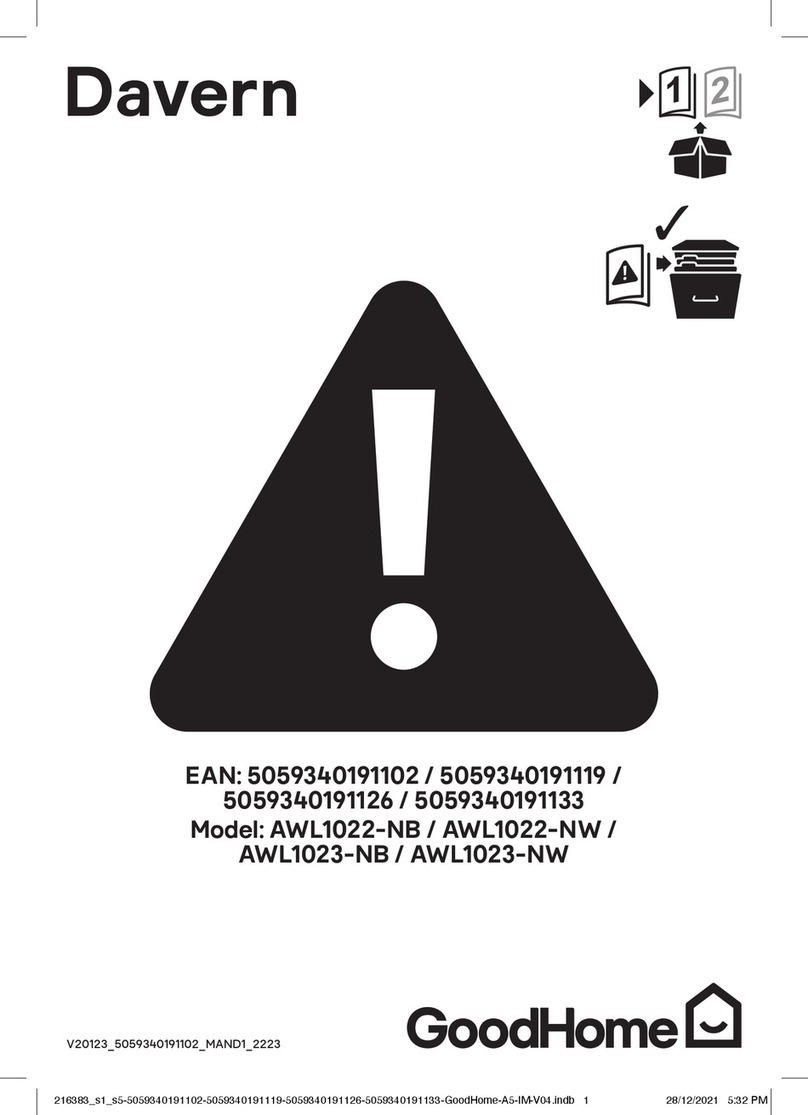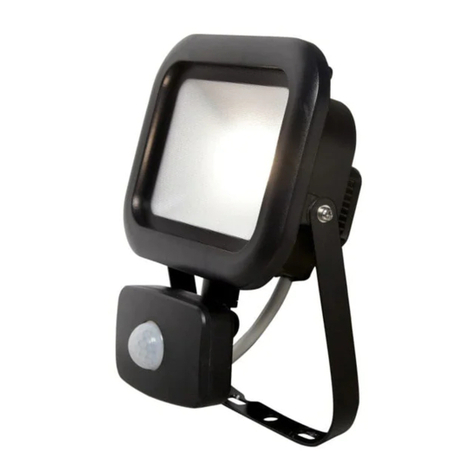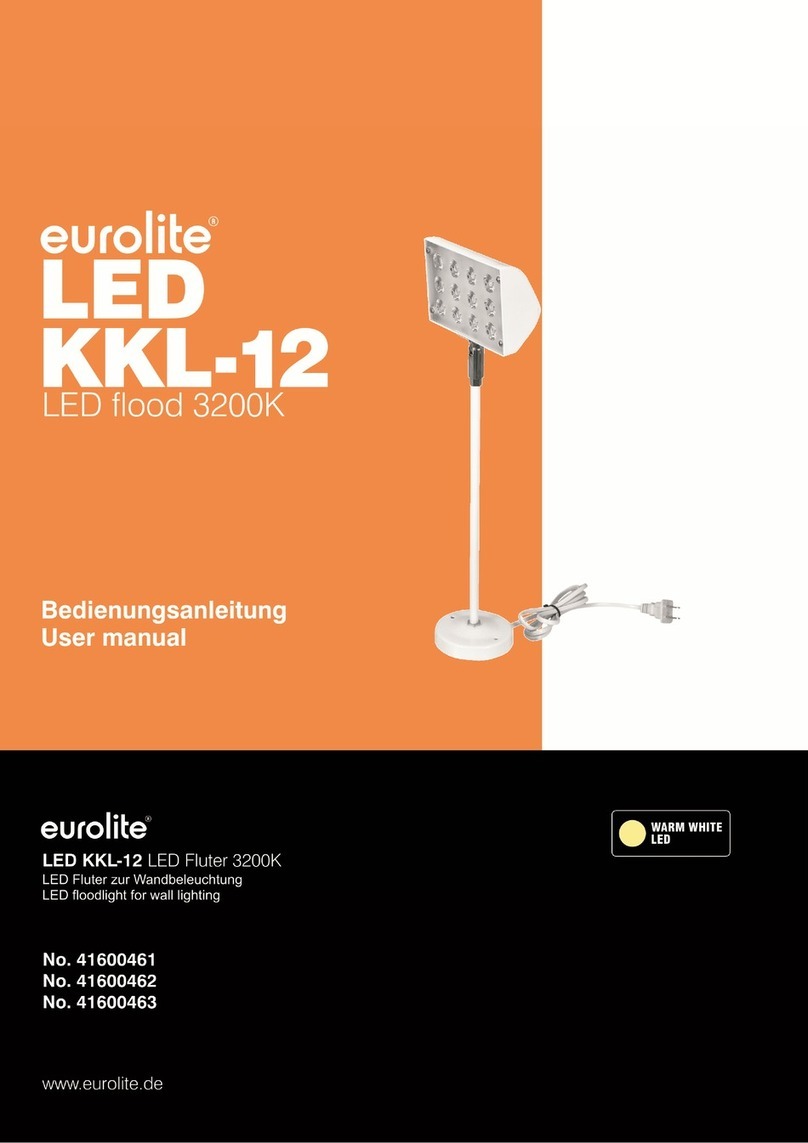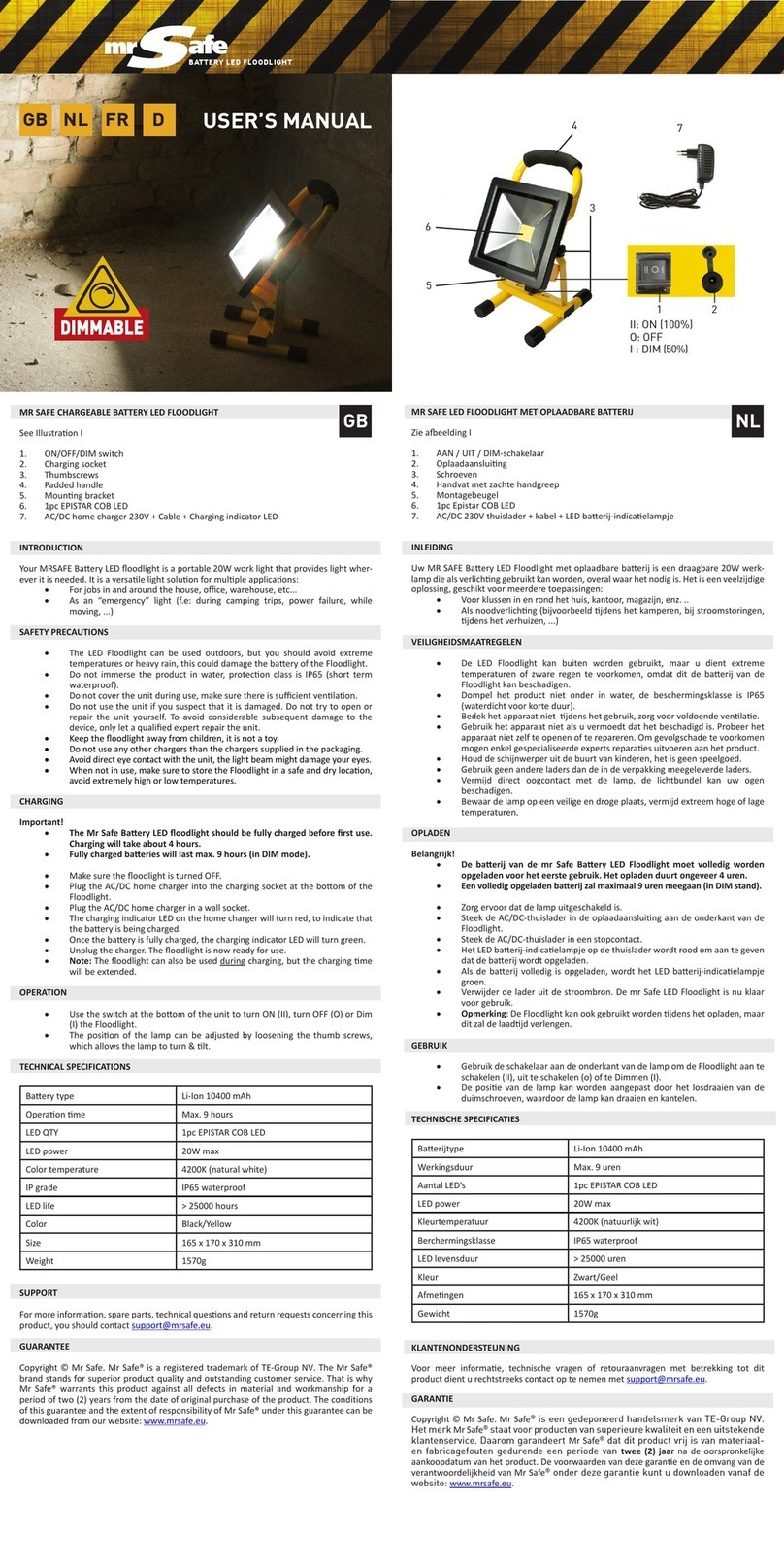
IF 1515 • 10/14 Copyright © 2014, Eaton’s Crouse-Hinds Business Page 2
FLOODLIGHT INSTALLATION
A) Yoke (Trunnion Mount)
1. Using trunnion arm as a template, mark and drill desired location on mounting
surface using only the mounting holes.
2. Secure trunnion arm to mounting surface using 1/2” bolts or lag screws
(provided by installer).
3. To make final vertical adjustment, loosen pivot bolts (2) on floodlight yoke and
position to desired vertical angle. Check to make sure the vertical angle is
within the aiming range shown (see Figure 3). Securely tighten both pivot bolts.
B) Pole Mount with SFA6 Slipfitter
1. Using the bolts, nuts, and lock washers provided, securely fasten the floodlight
yoke to the flange on the SFA6 slipfitter. Refer to Figure 2. Torque the bolts to
45 lbs.-ft.
NOTE: Angular positioning of the floodlight will be done later.
2. Place the SFA6 slipfitter adapter with the secured floodlight onto the 2” pole top
tenon.
3. Secure by tightening the slipfitter base bolts. Torque base bolts to 19 lbs.-ft.
WIRING
A) Pole and Yoke Mount – F2MV, FMV, FMV1000 Series Floodlights
and Champ®voyager nR Series Stainless Steel Floodlight
1. For yoke mount with SFA6 Slipfitter Adapter: Remove the access cover by
loosening the two (2) self-tapping screws. Set aside for reassembly later.
2. Using access opening, pull #16-3 type SO cord (or other extra hard usage
portable cord) supply wire from customer supplied wire chamber through pole.
Using the NCG7575 cable connector provided, position a minimum overall
length of 3 ft. cord for final connection to light fixture. Use a small amount
of HTL thread lubricant when installing cord connector and install according
to instructions supplied with connector. Securely tighten cord connector into
slipfitter.
3. Strip cord insulation jacket back 3 inches and strip each conductor 3/8”.
4. Secure the access cover as follows: For SFA6 slipfitter, secure cover by
tightening the two (2) self-tapping screws against SFA body. For SFA6 SS
slipfitter, attach access plate with four (4) screws and lock washers.
Proceed to B) Wiring the Floodlight.
B) Wiring the Floodlight
1. Loosen the twelve (12) captive floodlight cover screws on the door and
completely open the cover. Remove the four (4) screws that secure the
cover plate over the ballast housing. Be sure to retain the screws in a safe
place.
2. Ensure that line power is not connected to the SOW cord. Strip 3/8” of the
wires of the SOW cord for termination. Notice that all components in the
ballast assembly area are prewired. You will only need to wire line power to
the terminal block and ground wire.
3. Loosen the screws on the terminal block for the appropriate line voltage,
ground (GND), and common (COM) connections. Run the SOW cord
through the sealing cord connector, which is the connector on the bottom
of the luminaire. Terminate the equipment grounding conductor (green) of
the SOW cord first, the common (usually white), and finally the line voltage
(usually black) to the marked terminal blocks.
4. Tighten the sealing cord connector around the SOW cord so that the cord is
held securely in place. Place the ballast assembly cover back over the ballast
assembly area and fasten in place with the four (4) screws.
5. Install the lamp as specified on the nameplate. See LAMP INSTALLATION
AND REPLACEMENT section.
6. Close floodlight cover door making sure that all wires are safely inside and
positioned away from the ballast area. Securely tighten all cover screws. For
proper gasket seal, torque the cover screws to 22 lbs.-in.
7. To make final vertical adjustment, loosen the two (2) pivot bolts on the
floodlight yoke to position floodlight at the desired angle (within the
acceptable aiming range limits). See Figure 3. Tighten the two (2) pivot bolts
to 45 lbs.-ft.
WARNING
To avoid decreased lamp and fixture life or overheating of fixture, do not
position fixture beyond aiming range limits.
WARNING
To avoid explosion: On ballasts with multiple supply voltage taps (MT, TT,
etc.), all unused leads must terminate at the terminal block or be capped with
closed end wire connectors.
Figure 2 - SFA6
Base
Bolts (4)
Under no circumstances may wire splices be used in the slipfitter or pole. Use
continuous length supply cord from fixture to approved customer supplied wiring
chamber.
Note: For Class I, Zone 2 refer to NEC 505.15(c) or for Class I, Division 2,
501.10(b). Wiring must be installed in accordance with NEC 400.14.
IMPORTANT!



